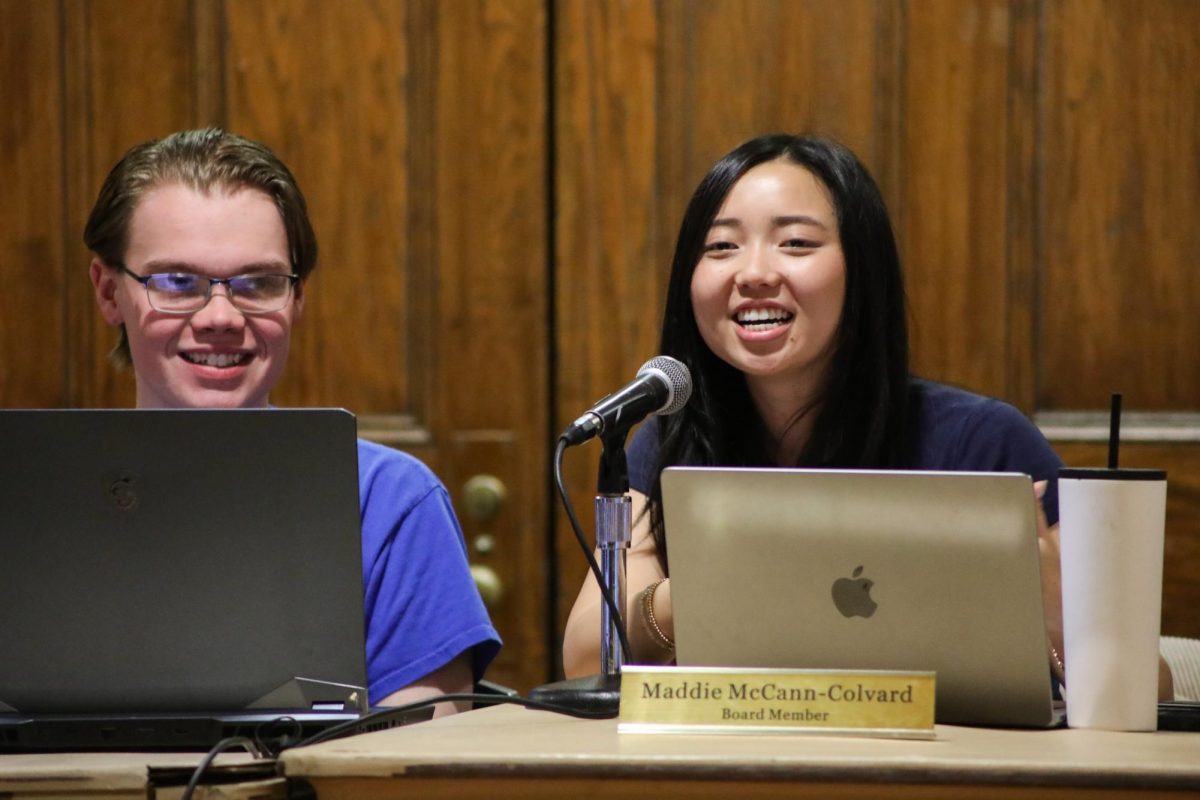The Simpsons exhibits true American values
December 1, 2004
With reality television taking over the majority of network programming, many critics have… With reality television taking over the majority of network programming, many critics have shunned this trend for what they deem “mindlessness.” One series that critics should find solace in is “The Simpsons,” which has both lured and attached viewers with a cozy familiarity and a soft intellectualism. The series is a comedy, for sure, but provides thought-provoking subtexts and societal reflections that no other show can quite match.
The unlikely series began as a running joke about a dysfunctional and irreverent — yet adorable — family of five in Small Town, USA. While many other cartoons opted for silliness, childish fads and other hackneyed premises, “The Simpsons” carved itself a solid base with middle America, appealing to those of every age, class and taste. The series has become more than a trigger for cheap laughs; deep within is a societal microcosm of American culture.
The family itself can be found within any household throughout the country. Homer has the qualities that many children can see in their very own fathers — he’s an affable, overweight guy who hates to work, loves to drink beer, hates to spend too much time with the family, yet sees the value of family nonetheless.
Marge speaks for the mothers who have devoted their lives to their family, become frustrated with their lack of respect and yet love them all the same.
Bart and Lisa are, perhaps, on the polar ends of the childhood spectrum. One has brains and manners, the other, mischievousness and crudeness. Lisa speaks for all of the young kids who don’t know what to do with their brains, and want to be more like Bart. Bart speaks for all the kids who enjoy rebellion, but want the brains they realize they may (or may not) lack. And for all of the interplaying tensions, ruffles and feuds, the show almost always ends with the foursome reconnecting at the end.
Larger social reflections can be seen within the snapshots of side characters. Beleaguered Wayland Smithers is reluctant to expose his bottled-up gay lust, paralleling society’s proven take on the issue: It’s okay, but don’t tell us about it (just yet). Then there is Chief Wiggum, the burly and questionably competent policeman whose character matches the thoughts we all have about the cops we see eating donuts on taxpayer money. Kwikie-Mart owner Apu is the stereotypical immigrant whom the locals both ridicule and subtly appreciate. Inside the elementary school is the oft-victimized Mr. Skinner; does he not epitomize the societal dilemma of both the need for and resistance to higher authority?
The community’s characters are all players in the show and in the feigned reality. Whether the masses of Springfield are in a frenzied mob attacking snakes or all warmly gathered in a community parade, the interchanging behavior of the collective character of the town can be seen in any community across the nation.
The series has not lasted 16 seasons by running on luck. Rather, the show avoided the traditional “escapism of reality” appeal that so many shows rely on — the show is a comical version of reality, which is why so many can connect with the charming series.


